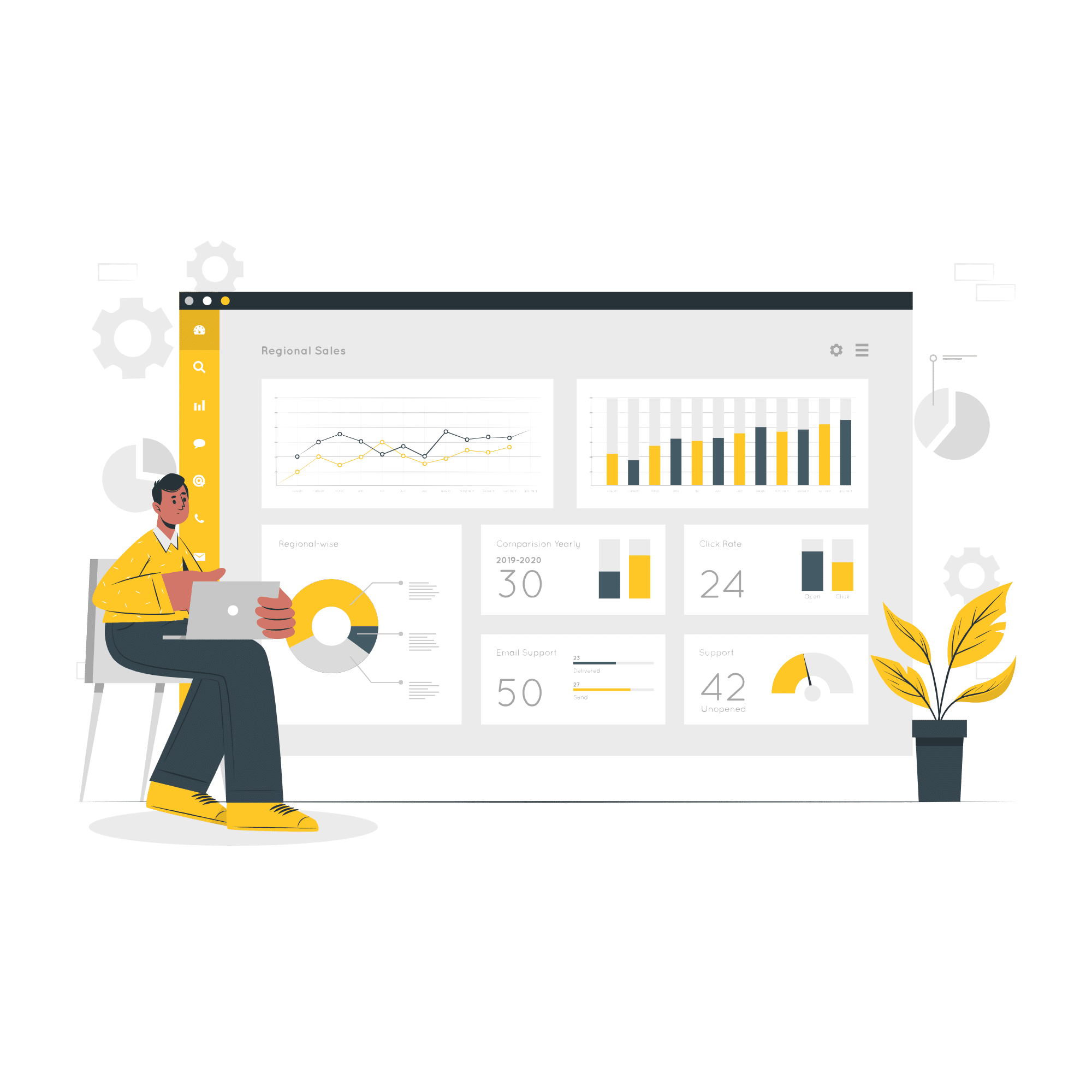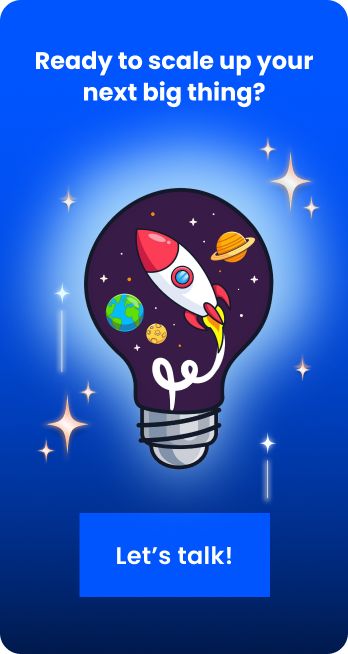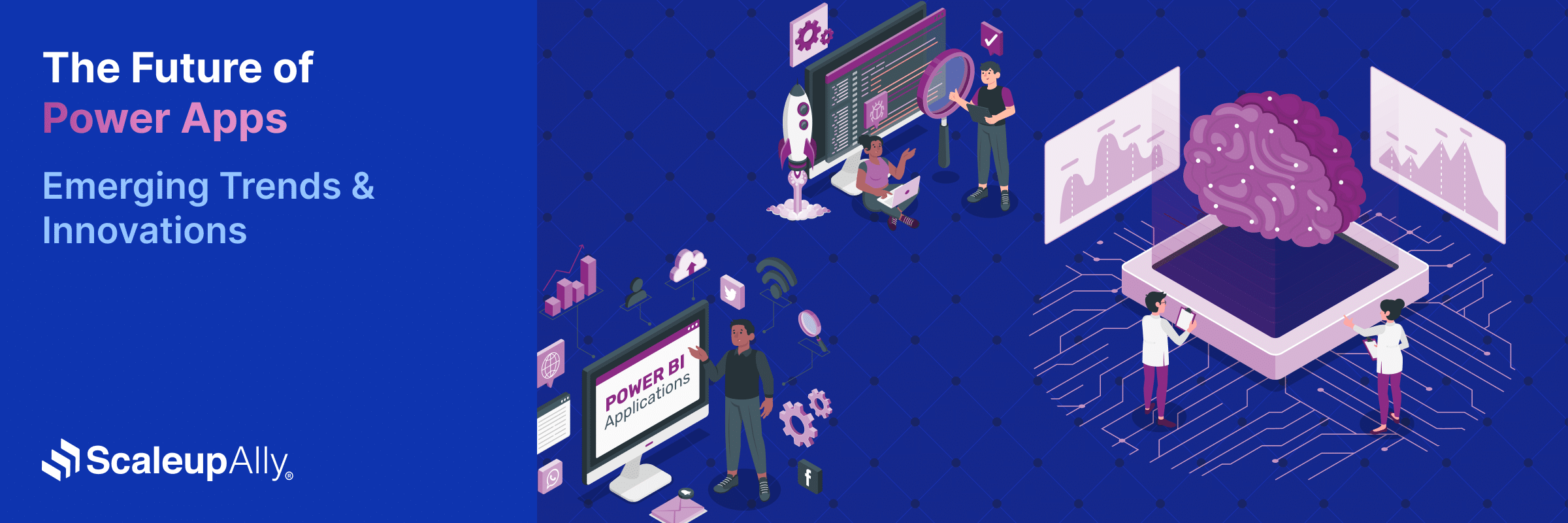
The Future of Power Apps: Emerging Trends & Innovations
Suprabhat Sen | January 31, 2025 , 16 min read
Table Of Content
While tech giants pump billions into AI and cloud computing, Power Apps has quietly grown into a market of over US$2 billion.
Power Apps is Microsoft’s bold answer to our endless appetite for custom business solutions. It started back in 2015 as Microsoft’s quiet experiment in low-code development and it paid off.
Gartner predicts that by 2025, 70% of new enterprise apps will use low-code technologies. As you’ve probably noticed, spreadsheets and manual processes are disappearing, and being replaced by sleek, custom apps. The citizen developer revolution is here.
But what is the future of Power Apps with Microsoft’s aggressive AI integration and the rapid evolution of low-code platforms? What new capabilities will reshape how we build business solutions? And not forgetting, what emerging trends and industry-specific use cases of Power Apps will drive digital transformation?
As Power Apps evolves from a simple app builder into a far more powerful platform, this blog explores the key industry trends and insights shaping its transformation in 2025 and beyond.
Key Takeaways
- Power Apps is shifting from a simple app builder to an AI-powered platform. With GPT-4 integration, you can soon build complex apps through natural conversation, cutting development time in half.
- We will see professional developers and citizen developers working together soon with AI as their assistant. This collaboration will help companies build solutions faster.
- Power Apps will soon connect seamlessly with physical devices and offer augmented reality features, and change how we interact with business apps.
- Security and governance are becoming simpler but more robust. New AI-powered security features will help protect apps and data without slowing down development, making it safer for everyone to build apps.
- The platform is moving toward true “build once, run anywhere” capability. Apps will work seamlessly across devices and platforms, even offline, while maintaining enterprise-grade security and performance.
How Has Power Apps Evolved Over the Years?
Born from Microsoft’s canvas apps in 2015, Power Apps started with a simple promise: letting business users create basic apps without coding. But Microsoft had bigger dreams.
2016 marked the first major leap when model-driven apps joined the family. Users could now build complex data models and sophisticated business logic without drowning in code.
Then came 2019 when Portals were introduced. Power Apps burst out of its internal business bubble, letting organizations create external-facing websites. The platform that once built simple inventory apps was now powering customer portals and partner websites.
In 2021, Power Apps began flexing its AI muscles. We saw GPT integration, document automation, and AI Builder. And suddenly, apps could “think.”
But 2023 was when things got really interesting. Microsoft dropped fusion teams development. Now, professional developers and citizen developers work side by side in the same environment.
The latest introduction is AI copilot features that turn natural language into working apps. All you need to do is just describe what you want, and Power Apps will start building.
We’ve come a long way from those basic canvas apps of 2015 where we saw 3.5 million monthly active users in 2020 grow to over 7 million by late 2023.
10 Trends Shaping Power Apps Future
Here are the ten most significant trends that are redefining the future of Power Apps. Each represents an incremental improvement in how we think about low code business application development.
1. AI-Powered Development Becomes the Norm
Building an app now majorly depends on writing thousands of lines of codes. But those days are fading fast. Power Apps’ AI Copilot is changing that. We are at a time where AI can transform a rough sketch into a working app in a very short period.
Use Cases: Intelligent code generation from natural language inputs, Automated bug detection and resolution systems, Real-time code quality assessment, etc.
Key Market Statistics:
- Development time reduced by 50% with AI assistance
- AI enterprise software market projected to reach $107 billion by 2025
- 70% of enterprise applications will integrate AI by 2025
Sources: TechCrunch, Mordor Intelligence, Gartner
2. Fusion Teams Development
Microsoft Power Platform is bridging the gap between pro and citizen developers. Soon, there won’t be so much difference between pro developers and citizen developers as the walls between them are crumbling down. Pros and citizens will work side by side, and each will bring their unique strengths to the table.
Use Cases: Joint development environments, Shared component libraries, Cross-skill team projects, Knowledge sharing systems, etc.
Key Market Statistics:
- 70% of new apps using fusion development by 2025
- 65% reduction in development backlog
3. Cross-Platform Development
Power Apps has broken free from the browser and has moved into mobile development. This advancement will eliminate the traditional barriers between different operating systems and devices, while ensuring consistent performance and user experience across all platforms. Native features, offline capabilities, the whole package – no platform-specific coding required.
Use Cases: Universal device compatibility, Native feature integration across platforms
Automated responsive design systems, Progressive web application deployment, Platform-specific feature optimization, etc.
Key Market Statistics:
- Enterprise mobile application market to reach $259 billion by 2027
- Monthly active users hit 7 million across platforms
- Cross-platform development adoption growing 25% annually
Sources: Microsoft Dynamics, KBV Research, Statista
4. IoT Integration Becomes Seamless
With direct connections to Azure IoT Hub, Power Apps is turning sensor data into actionable insights. IDC projects 41.6 billion connected IoT devices by 2025, and Power Apps is ready for this tidal wave. We’ve seen manufacturing plants transform their operations overnight with these integrations.
Use Cases: Real-time equipment monitoring systems, Predictive maintenance alerts, Asset tracking and management, Smart inventory systems, etc.
Key Market Statistics:
- IoT devices projected to reach 32.1 billion by 2030
- Industrial IoT market to hit 116.10 billion by 2028
- 75% of enterprises implementing IoT platforms
Sources: IDC, Statista, Strat View Research, Forrester
5. Low-Code Security Features Expand
Security used to be the domain of experts only. But that’s not the case anymore. Microsoft’s latest Digital Defense Report shows organizations using built-in security templates reduce configuration errors by 40%.
It’s democratizing security and making it accessible without compromising on protection. Even complex features like row-level security feel as natural as formatting a document.
Use Cases: One-click compliance templates, AI-powered threat detection, Automated security testing, Role-based access control, Data encryption management, Security policy automation, Compliance monitoring, Identity verification systems, etc.
Key Market Statistics:
- Low-code security market to reach $27 billion by 2026
- 45% reduction in security incidents
- 60% of enterprises adopting low-code security
Sources: Microsoft, IDC, Microsoft, Forrester
6. Mixed Reality Features Go Mainstream
Since Microsoft introduced mixed reality features to Power Apps, Forrester reports a 35% increase in enterprise AR adoption rates. Walk through a warehouse, point your phone at inventory, and watch real-time data float before your eyes.
Science fiction? Nope, just another day of extraordinary progress with Power Apps.
Use Cases: Virtual training simulations, 3D data visualization, Virtual product demos, etc
Key Market Statistics:
- Enterprise AR adoption growing 52% annually
- $38.08 billion mixed reality market by 2028
- 40% cost reduction in training programs
Sources: Forrester, Dataintelo, Mordor Intelligence, PWC
7. Custom AI Model Integration Simplifies
Building AI models once meant having a Ph.D. or knowing someone who did. Power Apps’ AI Builder has flipped that script. Small businesses deploying custom AI models through Power Apps can now grow exponentially, making way for mom-and-pop shops to use AI like tech giants.
Use Cases: Custom image recognition, Document processing automation, Natural language understanding, Predictive analytics models, Pattern recognition, Voice command integration, etc.
Key Market Statistics:
- Custom AI solutions market to reach $826.70 billion by 2030
- 55% faster AI model deployment
- 65% of enterprises building custom AI models
Sources: Statista, Microsoft, Deloitte
8. Collaborative Development Gets Enhanced
The headaches of version control and overwritten changes are history now. Teams can now build together in real-time, like Google Docs for apps. Using Microsoft’s collaborative features will deliver apps 40% faster.
Use Cases: Real-time code collaboration, Automated version control, Team development spaces, Change management tools, etc.
Key Market Statistics:
- Collaborative development tools market at $16.62 billion by 2029
- 35% reduction in development cycles
- 50% improvement in code quality
Sources: Statista, Forrester, Microsoft
9. Multi-Experience Development Platform
Power Apps now handles everything from voice interfaces to chatbots. Gartner’s latest Magic Quadrant shows Microsoft leading in multi-experience development platforms, with a 30% market share.
Use Cases: Voice-enabled interfaces, Chatbot integration, Progressive web apps, Touch-optimized interfaces, Gesture control systems, Wearable device apps, Multi-modal interactions, Context-aware experiences, etc.
Key Market Statistics:
- Multi-experience platforms market to hit $25.1 billion by 2027
- 60% of enterprises adopting multi-experience strategies
- 45% increase in user engagement
Sources: Grand View Research, Gartner, Forrester
10. Component-Based Development Expands
Why reinvent the wheel when you can borrow someone else’s and make it better? The Power Apps component framework has exploded, with Microsoft reporting a 100% year-over-year growth in component usage. Think app store, but for development building blocks.
Use Cases: Reusable UI components, Industry-specific templates, Drag-and-drop assembly, Component marketplaces, Template libraries, Integration components, etc
Key Market Statistics:
- Component market is expected to grow 155.09 billion by 2029
- 40% faster development time
- 55% reduction in maintenance costs
Sources: MarketsandMarkets, Microsoft, Forrester
The Future of Power Apps
The story of PowerApps’ future reads like a technology revolution in the making. Let’s look at what’s really coming.
1. AI Will Redefine App Creation
By 2026, building apps will feel like having a conversation. Microsoft’s planned GPT-5 integration (currently in development) will take AI assistance beyond simple code generation.
We are getting to the point where one will walk into a meeting, describe a business problem, and walk out with a working prototype. Developers will focus on innovation while AI will handle the technical aspects.
2. Apps Will Think Ahead
The next generation of Power Apps will anticipate rather than just respond. Machine learning integration will create apps that adapt to each user’s behavior patterns.
Think about a moment in time where you open your sales app and find out it has already prepared reports based on your meeting schedule, or a project management app that adjusts deadlines based on team performance patterns.
3. Security Will Scale
As app creation becomes universal, Microsoft plans to introduce AI-driven security frameworks that scale automatically. Future Power Apps will feature self-adjusting security protocols that respond to usage patterns and potential threats in real-time.
4. Power Apps Will Reshape the Digital Workplace
Looking at industry forecasts, by 2028, the low-code market will likely hit $187 billion and Power Apps will define how organizations approach digital transformation.
We’re moving toward a world where every business process could have its own custom app, created by the people who understand it best.
Industry Specific Power Apps Uses
Let’s explore how various sectors are leveraging this technology to solve their unique challenges and drive innovation.
Manufacturing
Have you taken a tour of a modern factory floor recently? They no longer entertain grease-covered paper forms. Teams now swipe through custom Power Apps using tablets to get real-time alerts when machines need attention.
A plant supervisor said their response time dropped from “finding out at the end of the shift” to “fixing it before it breaks.” Connecting IoT sensors with smart apps is turning things around for the manufacturing industry.
Healthcare
Hospitals are chaotic enough without adding paperwork to the mix. A clinic figured this out when they built a bed-tracking app that their nurses love to use. A small clinic can also create a simple appointment app that texts patients when their doctor is running late – their patient complaints dropped by half. It’s these little things that make healthcare more human.
Financial Services
Banks are finally catching up with the times. A credit union built an app that lets loan officers approve applications while grabbing coffee.
Their competitors are still pushing papers around desks. JPMorgan Chase took it further – their loan processing app catches details humans might miss. The best part is that small community banks can now build similar tools without breaking the bank.
Retail
Store managers used to spend hours walking aisles with clipboards. Now they use a Power App to check inventory. Small shops are also getting in on the action. A boutique built an app that lets customers virtually try on clothes and share looks with friends. Mom-and-pop stores are innovating too.
Education
When COVID hit, schools scrambled. Universities created a whole campus safety system that lets students report issues with a tap. A high school went further, creating an app that tracks not just attendance but student engagement. Teachers can notice when someone’s struggling before they fall behind.
We could keep going with more industries, but you get the idea. Power Apps is changing who gets to solve problems. And that’s what makes this technology actually matter in the real world.
Power Apps Challenges and Opportunities Ahead
The road ahead for Power Apps is filled with both hurdles and exciting possibilities – understanding these can help organizations better prepare for and capitalize on this technology
Challenges
- The AI Learning Curve: Not everyone is ready for AI-powered development. Teams are struggling to adapt to natural language app creation because it’s like learning a new dialect. Some developers resist it, preferring traditional coding. Plus, AI can sometimes misinterpret requirements and end up creating extra work.
- Data Privacy Nightmares: More apps mean more data floating around. Companies are already sweating about where their data lives and who can access it. When everyone starts building apps, tracking and protecting sensitive information becomes a headache. One wrong setting and customer data could leak.
- Integration Complexity: Legacy systems don’t play nice with modern apps. Banks still run on COBOL; healthcare still uses ancient databases. Making Power Apps communicate (think integrate) with these old systems is like teaching your grandparents to use TikTok – possible but painful.
- Governance Gone Wild: With hundreds of citizen developers building apps, maintaining standards is tough. Companies are finding their app landscape turning into the Wild West. Without proper governance, you end up with duplicate apps, security holes, and maintenance chaos.
- The Skills Gap Reality: Power Apps is “low-code,” but it still needs people who understand data modeling and business processes. Finding talent who can bridge the technical-business gap is harder than it sounds.
Opportunities
- Edge Computing Revolution: Power Apps will tap into edge computing, letting apps process data right where it’s created. Think of factory floor apps that don’t have to wait for cloud responses, or field service apps that work perfectly offline. Microsoft is already testing this. It will soon be the norm.
- The Great Process Revolution: Companies will finally tackle those manual processes they’ve ignored for years. No more “that’s how we’ve always done it.” When anyone can build an app, every inefficient process becomes an opportunity for innovation.
- Cross-Platform Magic: The line between mobile, web, and desktop apps will vanish. Build once, run anywhere – but for real this time. Microsoft’s pushing hard on this, and early previews look promising.
Conclusion
What started as Microsoft’s answer to the low-code movement has evolved into something far more ambitious. The next few years will be transformative. AI will make app development more conversational and Power Apps will continue democratizing innovation, putting powerful tools in the hands of those who understand business problems best.
Yet this transformation comes with responsibility. As more people gain the ability to create enterprise applications, organizations must balance innovation with governance, security with speed, and simplicity with sophistication. Those who master this balance will thrive in the new era of digital transformation.
One thing is clear: The future of business applications won’t be built by developers alone – it will be shaped by everyone who understands what their organization needs to succeed.
The question isn’t whether your organization will join this revolution, but how quickly you’ll embrace it. The tools are here. The possibilities are endless. The future is low-code, and it’s already unfolding.
Frequently Asked Questions
Q: Does Power Apps have a future?
The future of Power Apps is positioned for significant growth, with Gartner predicting that 70% of new enterprise applications will use low-code platforms by 2025. Microsoft’s continuous investment in AI integration and cross-platform capabilities suggests Power Apps will remain a key player in business application development.
Q: Is Power Apps in demand?
Yes, Power Apps professionals are highly sought after. The platform’s monthly active users doubled to 7 million in 2023, and companies are actively seeking developers with Power Apps expertise. With the low-code market expected to reach $187 billion by 2027, demand will continue to grow.
Q: What is the role of AI in the future of Power Apps?
AI will transform Power Apps development through natural language app creation, automated testing, and intelligent error correction. Microsoft’s GPT-5 integration will enable conversational app development, while AI-powered features will handle optimization, security, and performance monitoring.
Q: What industries can benefit the most from Power Apps?
Manufacturing, healthcare, and financial services show the highest potential for Power Apps adoption. These industries benefit from Power Apps’ ability to automate complex processes, integrate with IoT devices, and maintain strict security compliance. Retail and education sectors are also seeing significant advantages in customer experience and student management.
Related Blogs
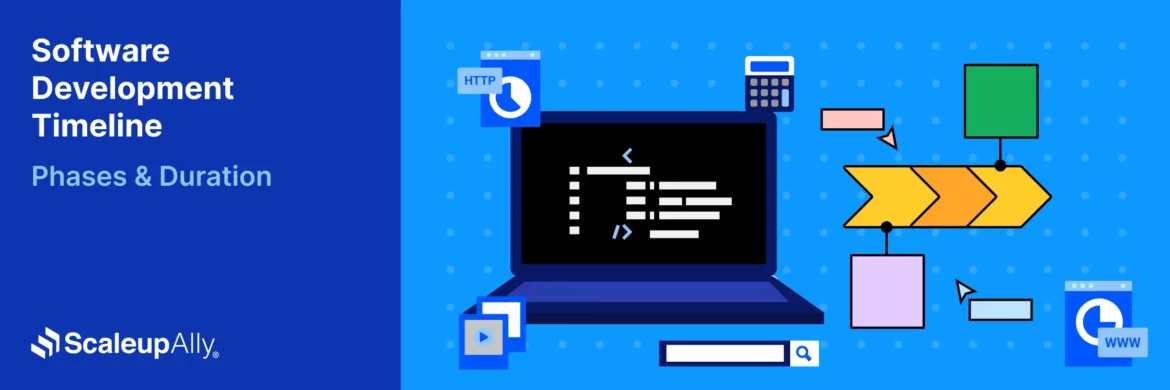
Software Development Timeline: Phases, Duration & Estimation Guide
Understand the software development timeline with phase durations, key factors, hidden delays, and practical methods to estimate project time.
Suprabhat Sen
Nov 29 ,
16 min read
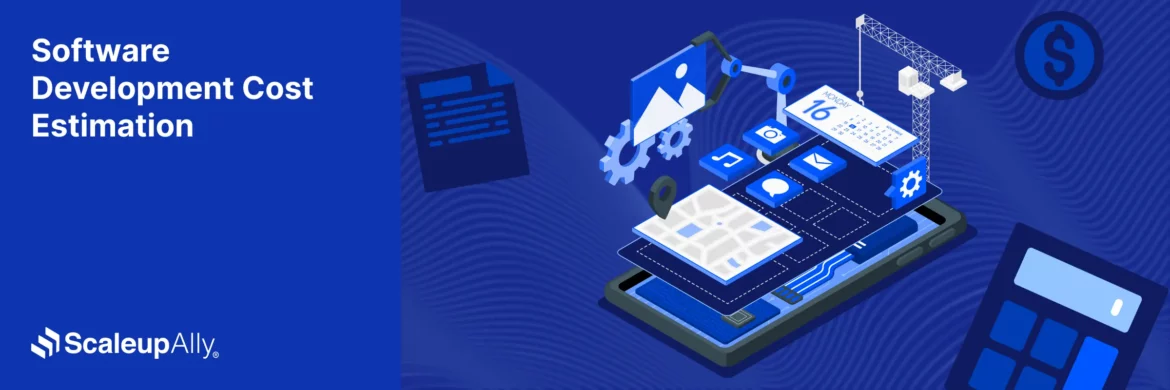
Software Development Cost Estimation Guide: What’s Included & What Affects the Price
Explore software development cost components, major pricing factors, and practical estimation methods to plan your project accurately from start to finish.
Suprabhat Sen
Nov 29 ,
14 min read
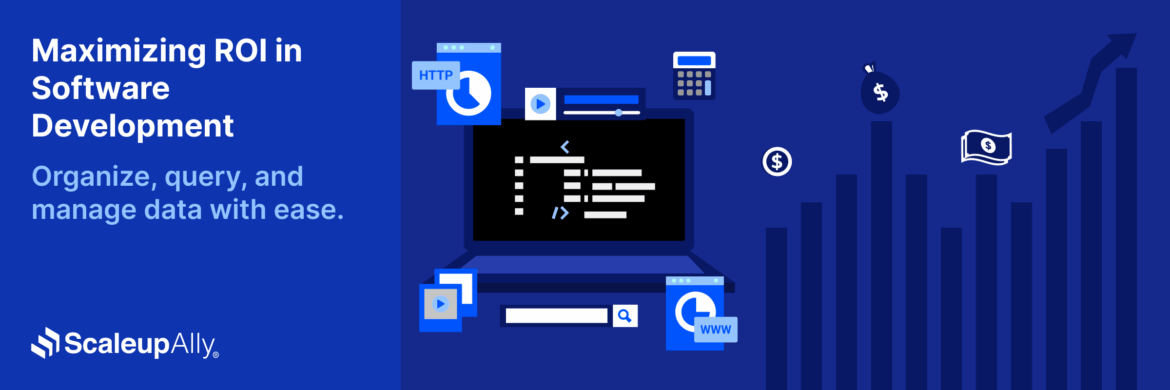
Calculating ROI for Software Development: A Detailed Guide
Discover proven strategies and practical tips to enhance the ROI for software development projects. Learn how to measure success and increase profitability.
Manu Jain
Nov 25 ,
19 min read
